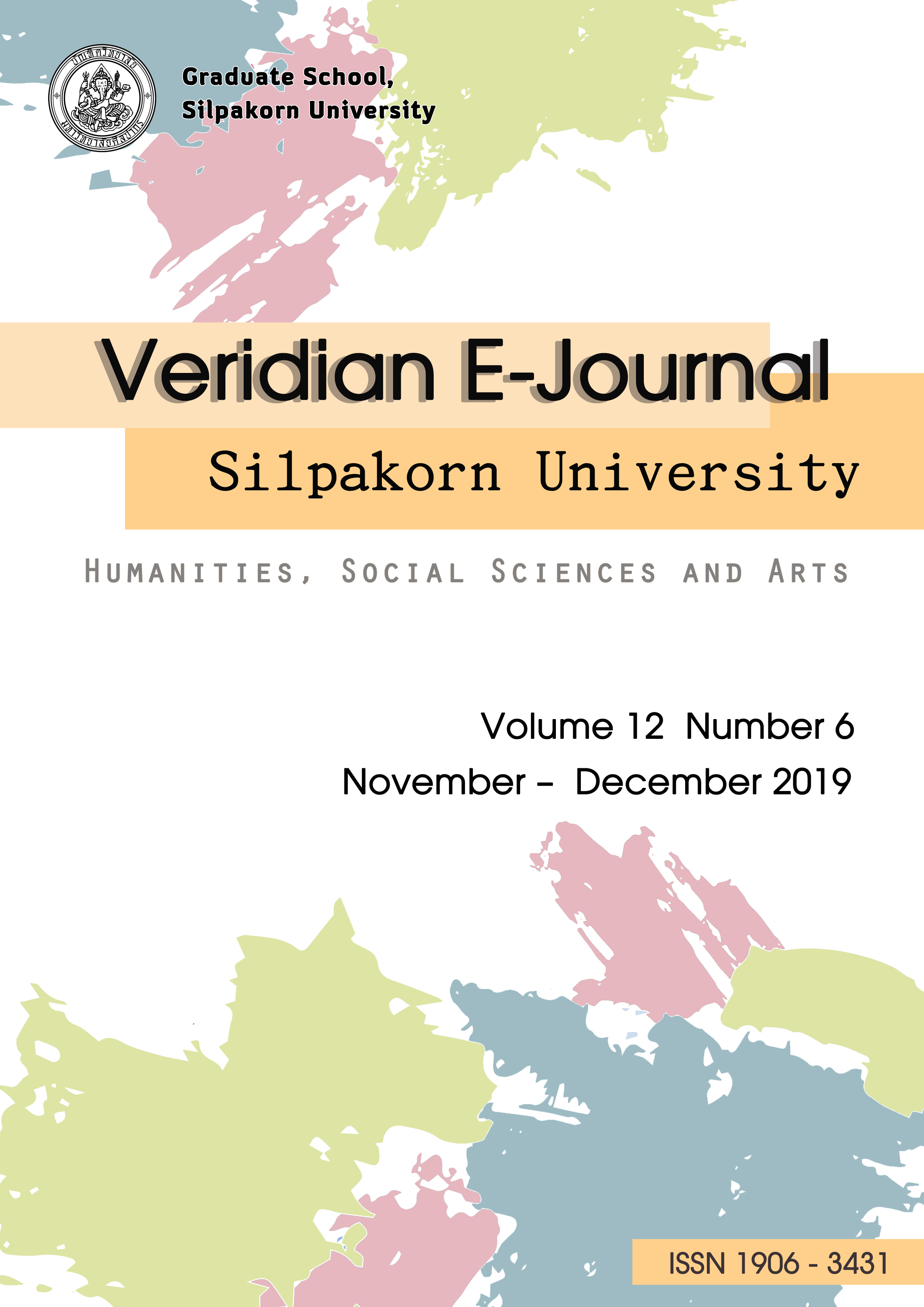ศักยภาพของวัตถุสำเร็จรูปและวัสดุเก็บตกต่อความทรงจำระดับปัจเจกกับความทรงจำร่วมของคนในสังคม กรณีศึกษาจากผลงานของ โจเซฟ บอยส์ และ มารีนา อบราโมวิก (The potential of ready-made and found object on individual and collective memory in a case study works of Joseph Beuys and Marina Abramovic)
Main Article Content
Abstract
บทความชิ้นนี้ศึกษาผลงานและแนวคิดของศิลปิน 2 ท่าน คือ โจเซฟ บอยส์ (Joseph Beuys, 1921-1986) และ มารีนา อบราโมวิก (Marina Abramovic, 1946-ปัจจุบัน) ภายใต้แนวคิดเกี่ยวกับความทรงจำ 2 ลักษณะคือ ความทรงจำระดับปัจเจก (individual memory) และ ความทรงจำร่วมในสังคม (collective memory) ภายใต้วิธีการสร้างสรรค์จาก การใช้วัตถุสำเร็จรูป (readymade) และวัสดุเก็บตก (found object) โดยใช้วิธีการอ่านความหมายแฝงแบบสัญศาสตร์โครงสร้าง (Structural Linguistics) ผลงานของ โจเซฟ บอยส์ชื่อ How to Explain Pictures to a Dead Hare (Wie man dem toten Hasen die Bilder erklärt, 1965) และผลงานของ มารีนา อบราโมวิก ในชื่อว่า Balkan Baroque (1997) จากการศึกษาพบว่าผลงานของ โจเซฟ บอยส์มีลักษณะของความทรงจำส่วนตัวมากกว่างานของ อมบราโมวิก ซึ่งมีลักษณะการวิพากษ์ในด้านสังคมมากกว่า แต่การใช้วัสดุในลักษณะเก็บตกของอบราโมวิกนั้นมีศักยภาพทางความทรงจำเฉพาะตัวที่แสดงภาพความทรงจำและความคิดศิลปินได้ชัดเจนกว่าลักษณะวัตถุสำเร็จรูปของบอยส์ ดังนั้นวัสดุเก็บตกจึงมีศักยภาพในแง่การนำเสนอความทรงจำได้ดีกว่าวัตถุสำเร็จรูปที่แสดงศักยภาพทางความทรงจำได้ด้อยกว่า เพราะวัตถุสำเร็จรูปนั้นไม่สามารถแสดงออกทางอารมณ์ได้ดีเท่า
This article examines the works and concepts of two artists, Joseph Beuys (1921-1986) and Marina Abramovic (1946-present), under the theory of individual memory and collective memory between the usage of ready-made and found objects materials, with the structure semiotics analysis in Joseph Beuys's work, How to Explain Pictures to a Dead Hare (Wie man dem toen Hasen die Bilder erklärt, 1965) and Marina Abramovic’s work, Balkan Baroque (1997). According to the studies, it has been found that both pieces of works, reflected individual and collective memories with different aspect. Joseph Beuys's work represented more personal memory than Abramovic's work in Balkan Baroque (1997), which indicates more of social criticism. However, the use of Abramovic’s found object has capability to capture individual memory by showing images of recollection and artistic ideas more specifically than the ready-made material characteristics of Beuys’s work. Therefore, the found object material has better potential in presenting memory than ready-made material which shows inferior in memory capacity and less ability to express emotion when compared with the found object material.

